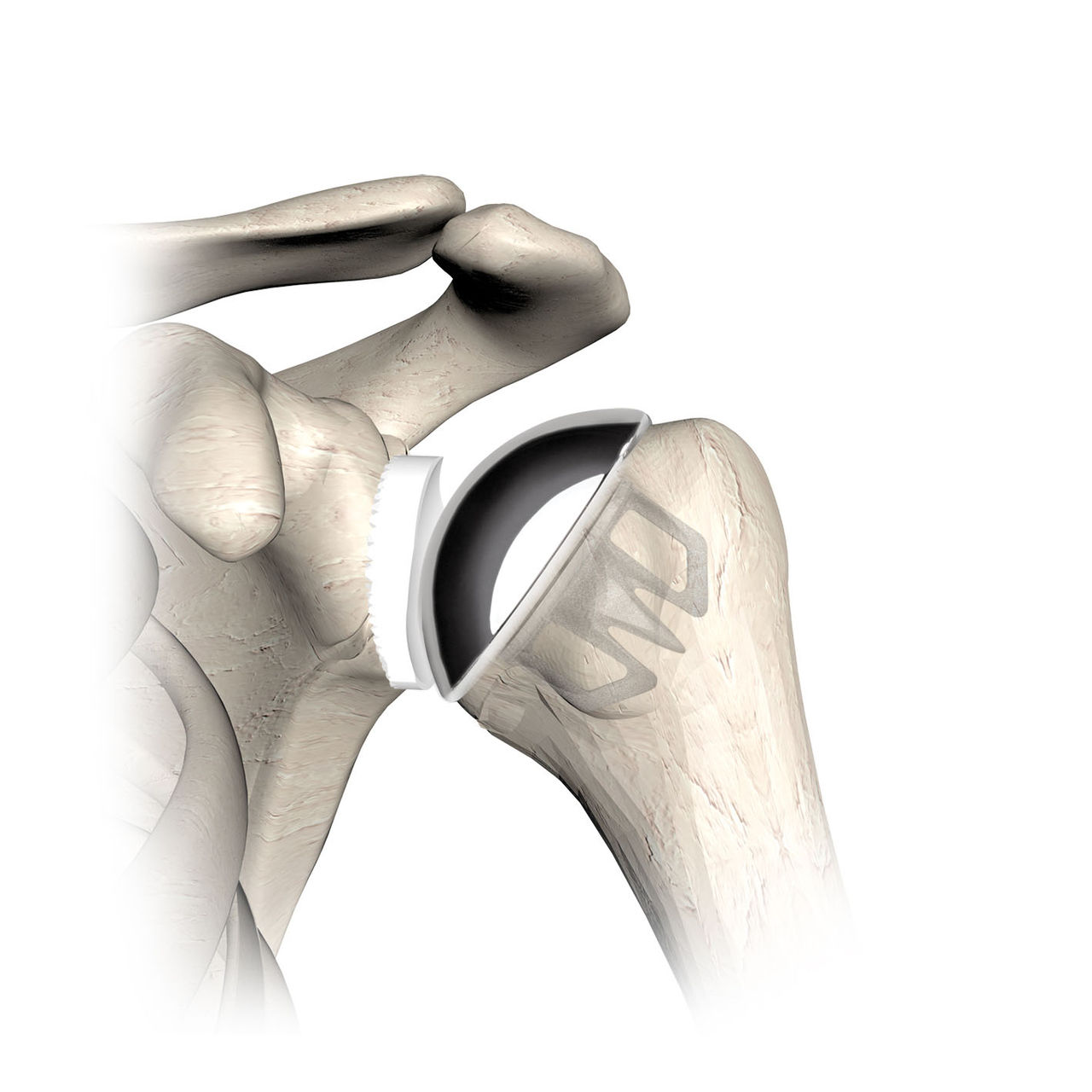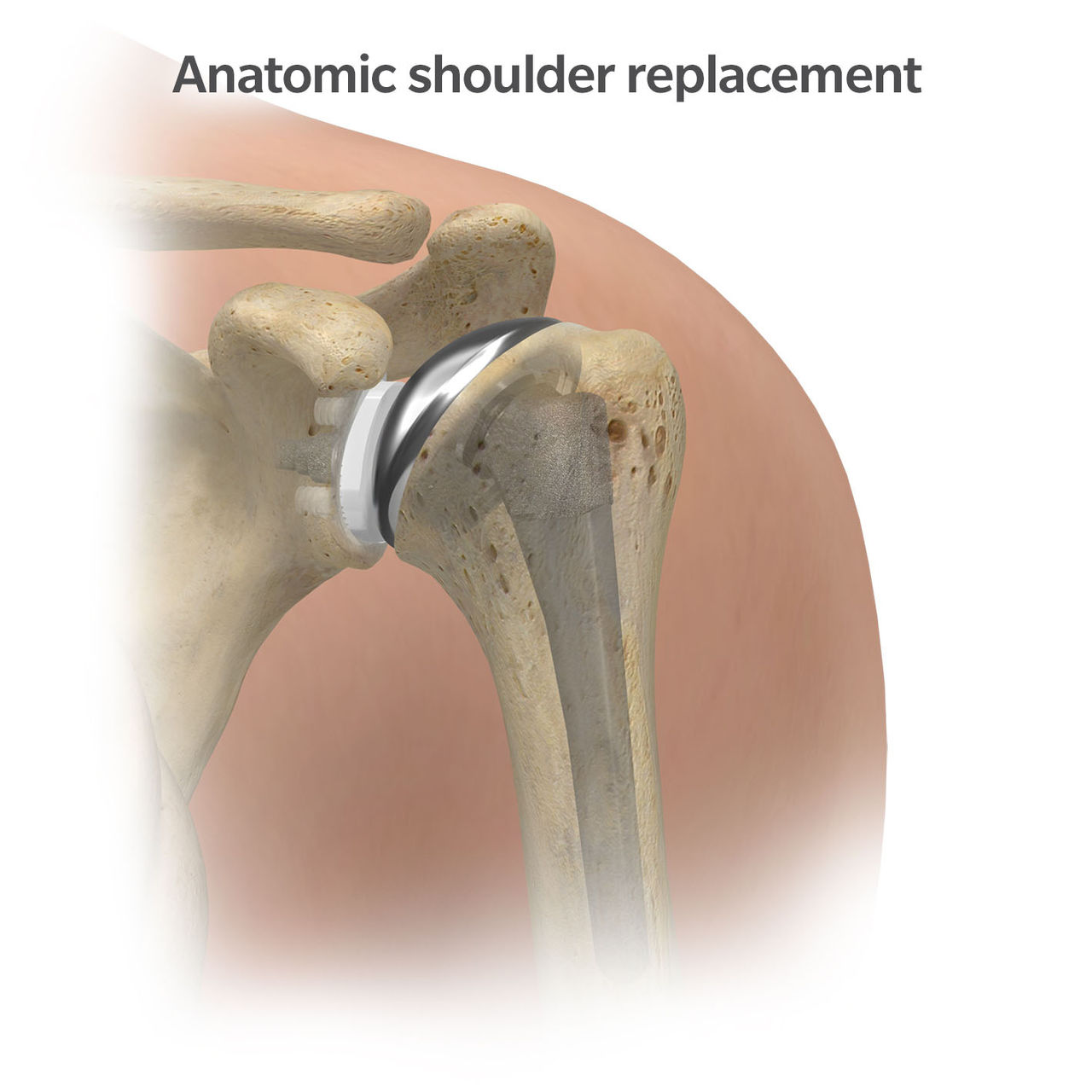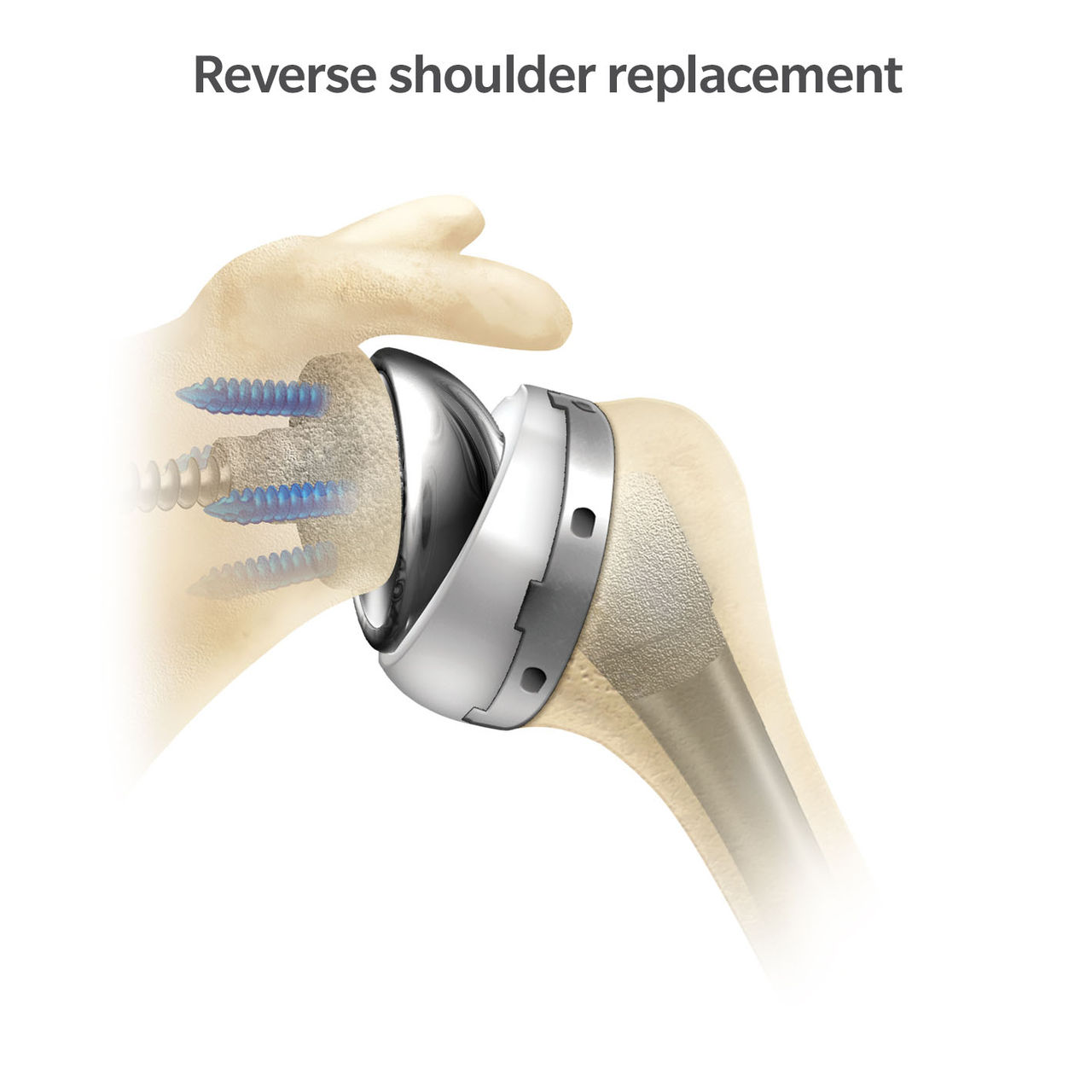Shoulder Pain Relief & Surgical Treatment Options
If home remedies and other conservative treatments aren’t helping your shoulder pain, your doctor may suggest surgical options. Here are a few common treatments you may hear about.
If home remedies and other conservative treatments aren’t helping your shoulder pain, your doctor may suggest surgical options. Here are a few common treatments you may hear about.
When your pain associated with shoulder arthritis continues despite trying non-operative treatments, it may be time to consider surgical options. There are several surgical options available, based on the underlying problem with your shoulder, to help with pain relief and restoration of function. Speak with your surgeon on the options that may be helpful to you.
Shoulder replacement surgery has come a long way over the past fifty years as instrumentation, implants, and anesthesia techniques continue to evolve. But, as with any surgical procedure, there are possible risks and complications. You can read more about associated risks with shoulder replacement surgery by clicking here. You can also discuss these with your surgeon as well.
Hemiarthroplasty, or partial shoulder replacement, involves only replacing part of the shoulder. In this procedure, the upper part of the humerus bone (the ball) is replaced, but the “socket” portion of the shoulder is not replaced. More specifically, the humeral head (top ‘ball’ portion of the humerus) is replaced with a metal ‘ball’ head. This ball is typically attached to a stem that is placed inside the upper part of the humeral bone. There are “stemless” shoulder replacements too. Rather than a stem being placed down inside of the humeral bone, a short stemless implant is placed on the top of the humeral bone. This may be considered in patients with strong humeral bone. There are a large number of stems/stemless components as well as metal heads to help better match a patient’s specific anatomy and needs.

A hemiarthroplasty may be considered for patients when the arthritis occurs only on the humeral side, which typically occurs in conditions like avascular necrosis. Additionally, a hemiarthroplasty may be considered in some fractures of the humerus.
Want to learn more about your options for shoulder pain? Click on this image for a free downloadable brochure.
In anatomic shoulder replacement, both the “ball” portion of the humeral bone and “socket” portion of the shoulder are replaced. The surface of the socket is replaced with a medical-grade plastic implant. Then, the “ball” portion of the humerus is replaced with a metal implant, similar to the parts used in the partial shoulder replacement. This procedure is usually indicated in patients who have arthritic wear on both sides of the shoulder joint and who also have a rotator cuff that is intact or repairable.

In reverse shoulder replacement, a stem is inserted in the humeral bone, however, rather than a ball being placed, a metal tray with a curved medical-grade plastic insert is positioned. On the socket side, rather than a plastic socket being placed, a small metal baseplate is placed along with a round ball called the glenosphere.
In essence, the joint has become reversed. Instead of being placed on the end of the humeral bone, the ball is placed where the socket used to be located. The curved socket is placed where the ball used to be located. This is why we say the joint is reversed… because the ends are essentially swapped.
This style of implant is more constrained than an anatomic shoulder replacement. It’s primarily used in patients who have a weak or deficient rotator cuff. The reverse arthroplasty option uses the outer deltoid to help lift and stabilize the arm.
The reverse arthroplasty is now being used for a number of conditions from arthritis with a rotator cuff tear to treatment of some fractures.

There are risks of shoulder replacement surgery including, but not limited, to infection, wear, implant or bone fracture, loosening, nerve damage, and instability (the ball slipping from the socket). Some patients continue to experience some pain after shoulder replacement. Individual results will vary. Your results will depend on your personal circumstances. How long a shoulder replacement will last varies from patient to patient. It depends on many factors, such as the patient’s physical condition, activity level, and how well you follow doctor’s orders. Replacement joints are not as strong or durable as natural, healthy joints, and there is no guarantee that a prosthetic joint will last the rest of a patient’s life. All shoulder replacements may need to be replaced at some point. Talk to your surgeon about these and other risks associated with joint replacement. To learn the risks of shoulder replacement surgery, click here.